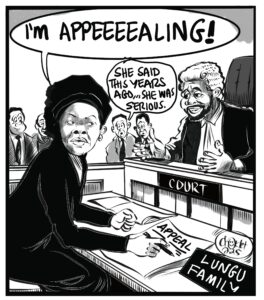Zesco Plc spokesperson Henry Kapata says electricity tariff revisions over the last few years have not kept up with the rising cost of generation and have led to the power utility’s declining financial position.
In an interview with News Diggers! Kapata explained some of the reasons Zesco had presented in its proposed tariff adjustment application to the Energy Regulation Board (ERB), which include the rising cost of power from new Zesco generation infrastructure and Independent Power Producers (IPPs).
He, therefore, justified the proposed tariff increment as inevitable because the cost of power from new generation infrastructure was much higher than the cost of generation from old power plants, adding that the proportion of generation from new power plants had been increased to meet the rising demand for electricity.
According to a revised schedule, Zesco applied to the ERB for an upward revision of tariffs for all consumer categories in an effort to ensure they are cost reflective.
Part of Zesco’s proposal includes a hiked tariff for metered residential customers who may pay K0.47 per kWh from K0.15 per kWh in the R1 consumption bracket of up to 100kWh, while consumers above 301kWh will be hit with a proposed tariff of K1.94 per kWh, up from K0.89 per kWh.
“We have attached several reasons to our application for tariff adjustments to the Energy Regulation Board. Some of the reasons will have to do with the prevailing economic conditions, as you know, the Zambia inflation rate as measured by the All Items Consumer Index has remained relative in the year 2018. This means that the prices of goods and services have been rising at a steady rate every month and have resulted into a steady increase in Zesco’s operating costs over time. The kwacha has also continued to fluctuate against the US dollar over the past two years. So, given that the bulk Zesco equipment and supplies are procured in foreign currency, the depreciation of the kwacha leads to higher operation costs in kwacha terms,” Kapata explained.
“Another reason, of course, is the system in customer base expansion projects. Zesco continued to support the government in its quest to achieve the Millennium Development Goal (MDG) of hauling poverty through increasing access to electricity for the Zambian populace. This has been through the ongoing construction of additional power generation capacity as well as transmission and distribution power system expansion and reinforcement projects. Then, Zesco plans to continue with its planned expansion and reinforcement to enable the company to improve the quality of services and meet the anticipated increase in demand for electricity from existing and new customers. The other reason that was attached is the rising cost of power from new Zesco generation infrastructure and Independent Power Producers. We noticed that the rising demand for power in Zambia and the continued reforms to the energy sector are making it possible for more investment to be made in electricity generation by both the public and the private sector. And so, the cost of power from new generation infrastructure is much higher than the cost of generation from old depreciated power plants because the proportion of generation from new power plants increases to meet the rising demand. The overall cost of electricity rises; this means that the selling prices also rise in order to keep the sector sustainable.”
He also outlined how increases in the cost of financing had pushed up the tariffs that are offered to Zesco as the main off-taker of the power from the new generation plants, and how the utility in-turn passes over this cost to consumers.
“The tariff revisions over the last few years have not kept up with the rising cost of generation and have led to Zesco’s declining financial position and failure to achieve price equity between the end user tariffs and the cost of power from Independent Power Producers. Furthermore, as economic indicators show, the obtaining position of Zambia has led to international financiers of new generation plants demanding higher interest rates as Zambia is perceived to be risky due to the national debt sustainability issues. Now, these increases in the cost of financing have pushed up the tariffs that are offered to Zesco as the main off-taker of the power from the new generation plants and Zesco in-turn has to pass over this cost to our dear customers,” Kapata explained.
Asked why Zesco was proposing such a huge tariff increment and if it was possible for the adjustment to be done in phases, Kapata said that would be up to ERB to decide.
“No, what we do as Zesco is to apply for tariff adjustment, when we apply, ERB are the ones that are going to approve or tell us what to do. When we applied last time, they told us that we had to do it in phases. So, the ball is in the court of the ERB, ours is to make a request to say when we do this, it will be much more flexible for us and for a customer. So, since we have already submitted, ERB will call for what they call a public hearing where people will make submissions over the tariffs. Then ERB will look at the people’s submissions and make a decision. So, it’s not us to break it down,” replied Kapata.
On the commercial side, Zesco also wants consumers in the C1 bracket (who consume up to 200kWh) to now pay K1.07 per kWh, up from the current K0.54 per kWh, while consumers in the C2 bracket of above 200kWh will be faced with a daunting tariff of K1.85 per kWh compared to the current K0.54 per kWh.
Three other customer categories, which include social services and bulk distribution, also face huge increases by the power utility should the ERB approve their application.
























